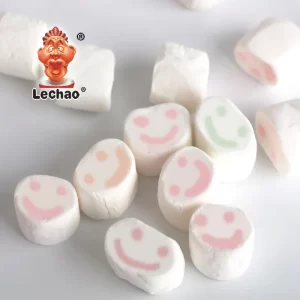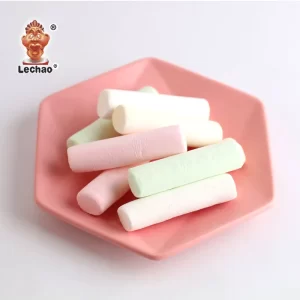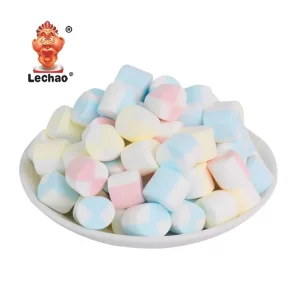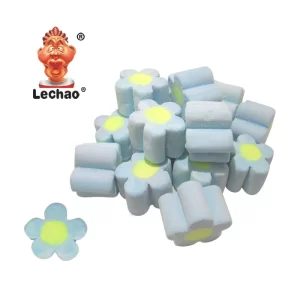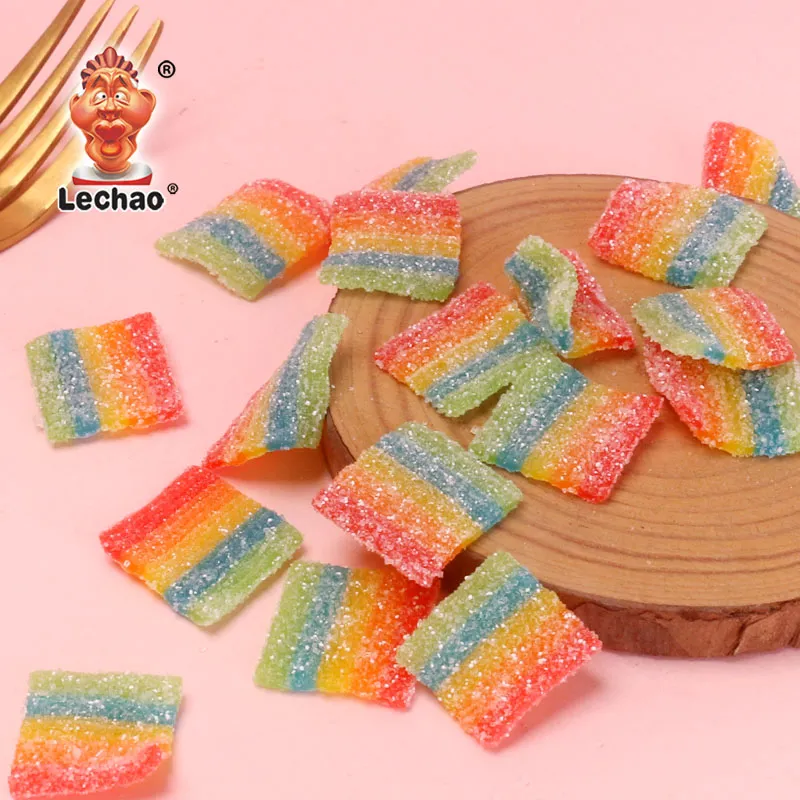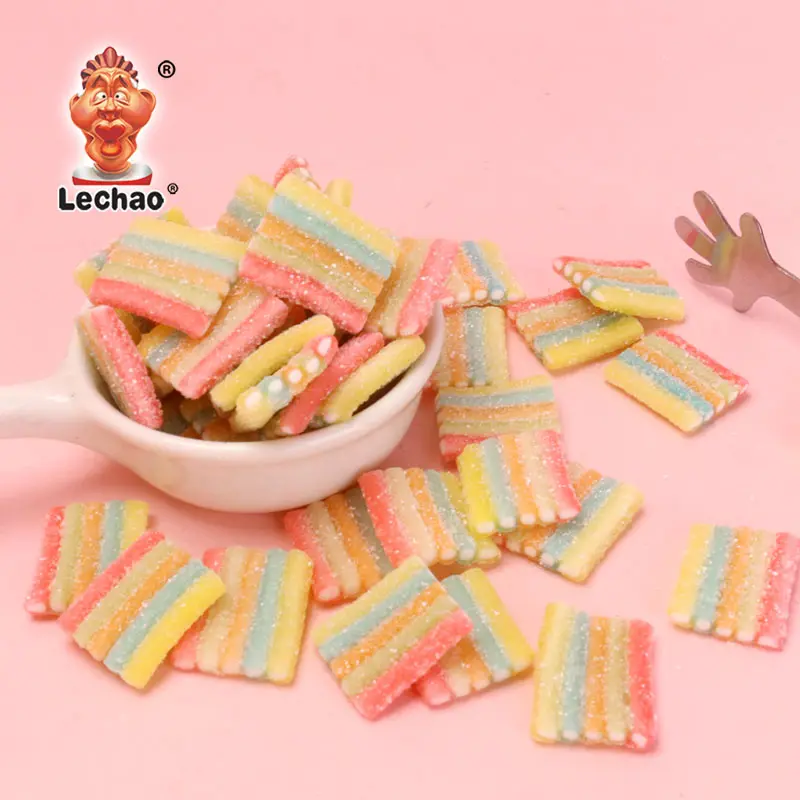Discover the secret behind marshmallows’ fluffy texture and why gelatin makes them irresistible.
When you think of marshmallows, do you imagine their soft, fluffy texture and delightful melt-in-your-mouth sensation? The key ingredient behind this is gelatin. As LeChao Candy, specializing in soft candy and marshmallow research and production since 1991, we deeply understand the importance of gelling components in candy manufacturing. This article will provide an in-depth look at the relationship between marshmallow and gelatin, and how they contribute to this globally popular dessert ingredient.
What Are Marshmallows?
Marshmallows are soft, fluffy candies known for their unique texture and versatile applications. They’re not only important retail products but also widely used in baked goods, beverage pairings, and food processing ingredients. The history of marshmallows dates back to ancient Egypt, where people used marshmallow plant root sap mixed with honey to create the earliest marshmallows.
Modern marshmallow production methods were revolutionized in the late 19th century by using gelatin instead of marshmallow sap, making marshmallows more suitable for mass production and giving them more stable texture characteristics, which provides convenience for food companies’ bulk procurement and applications.
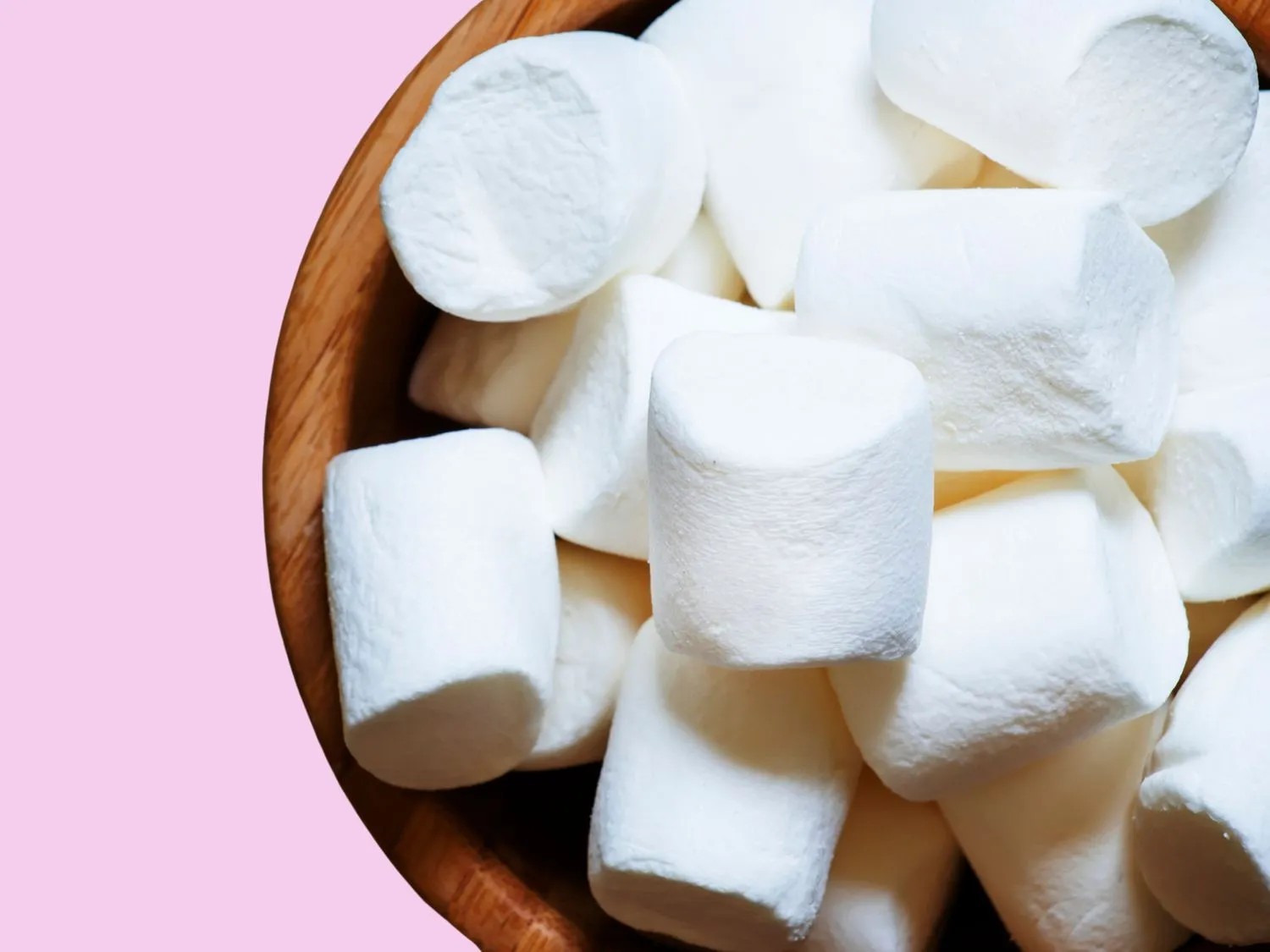
The Role of Gelatin in Marshmallows
Gelatin, also known as gelatine, is a pure protein colloid extracted from animal bones, skin, and connective tissues. In the industrial production of marshmallow, gelatin plays an indispensable role, mainly reflected in the following aspects:
- Provides Structural Support: Gelatin can mix with water to form a semi-solid gel, thereby providing support for the fluffy structure of marshmallow.
- Promotes Expansion: During the mixing process, gelatin’s protein characteristics help the marshmallow mixture whip and expand, forming a light foam-like texture.
- Achieves Melt-in-Mouth Sensation: Since gelatin melts at around 35°C, close to human body temperature, marshmallows quickly dissolve in the mouth, providing a smooth experience.
- Ensures Product Stability: During mass production, gelatin ensures marshmallow maintains texture stability during storage and transportation.
Advantages and Disadvantages of Gelatin
In the confectionery manufacturing industry, gelatin as a core ingredient has both advantages and considerations. Here are its main pros and cons:
Advantages
- Efficient Gelling Properties: Gelatin quickly forms soft gels, making it ideal for mass production of marshmallows.
- Enhances Texture: It gives marshmallows their characteristic melt-in-mouth quality, enhancing the end product’s eating experience.
- Processing Stability: Gelatin has good processing adaptability, meeting the needs of different formulations and production processes.
- Cost-Effectiveness: As a mature industrial raw material, gelatin offers good cost performance.
Disadvantages
- High Process Requirements: In high-temperature or high-acid environments, gelatin’s gel structure may break down, requiring precise process control.
- Dietary Restrictions: Since it’s extracted from animals, gelatin isn’t suitable for vegetarians or certain religious dietary requirements.
- Supply Chain Considerations: Need to ensure gelatin sources comply with relevant quality standards and regulations.
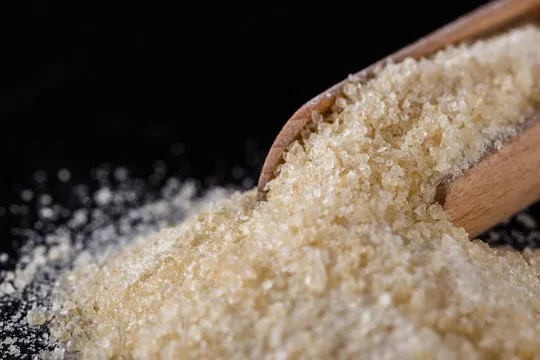
How to Use Gelatin Correctly
In industrial production of marshmallow, correct use of gelatin is crucial. Here are the key process points:
- Soaking Treatment: Soak gelatin sheets in ice water below 10°C for 15-20 minutes to fully absorb water and soften, ensuring subsequent uniform dissolution.
- Melting Temperature Control: When melting gelatin, use a water bath with temperature controlled below 50-60°C to avoid damaging its gelling ability.
- Ingredient Compatibility: For formulations containing acidic ingredients, first mix gelatin with the base and cool slightly before adding acidic substances.
- Batch Consistency: Establish standardized operating procedures to ensure consistent quality for each batch of marshmallows.
Frequently Asked Questions
1. Why is gelatin necessary in marshmallow?
Gelatin is crucial for achieving the fluffy structure and melt-in-mouth texture of marshmallows. It forms a protein gel network that traps air bubbles, maintaining texture stability after whipping. Without gelatin, marshmallows would lose their unique texture and commercial value.
2. Are there alternatives to gelatin?
Yes, for specific market needs, plant-based gelling agents like agar-agar or konjac powder can be used. However, these alternatives may differ from gelatin in terms of texture, melting characteristics, and cost-effectiveness, requiring selection based on specific product positioning.
3. Does gelatin meet food safety standards?
When complying with food safety regulations, gelatin at consumption levels is safe. As an ISO and HACCP certified manufacturer, LeChao Candy ensures all products use food-grade high-quality gelatin and maintains a comprehensive quality traceability system.
4. What should be considered when purchasing marshmallows in bulk?
When enterprises purchase marshmallows, they should consider the supplier’s production capacity, quality stability, delivery cycles, and customization services. With over 30 years of industry experience, LeChao Candy provides stable bulk supply and professional formula support for commercial clients.
Conclusion
In summary, gelatin is indeed an indispensable core ingredient in marshmallows, giving them their characteristic texture properties and stable quality performance through its gelling action. As a professional soft candy manufacturer, LeChao Candy, with over 500 molds and industry-leading R&D capabilities, focuses on providing high-quality marshmallows bulk procurement solutions for enterprise clients.
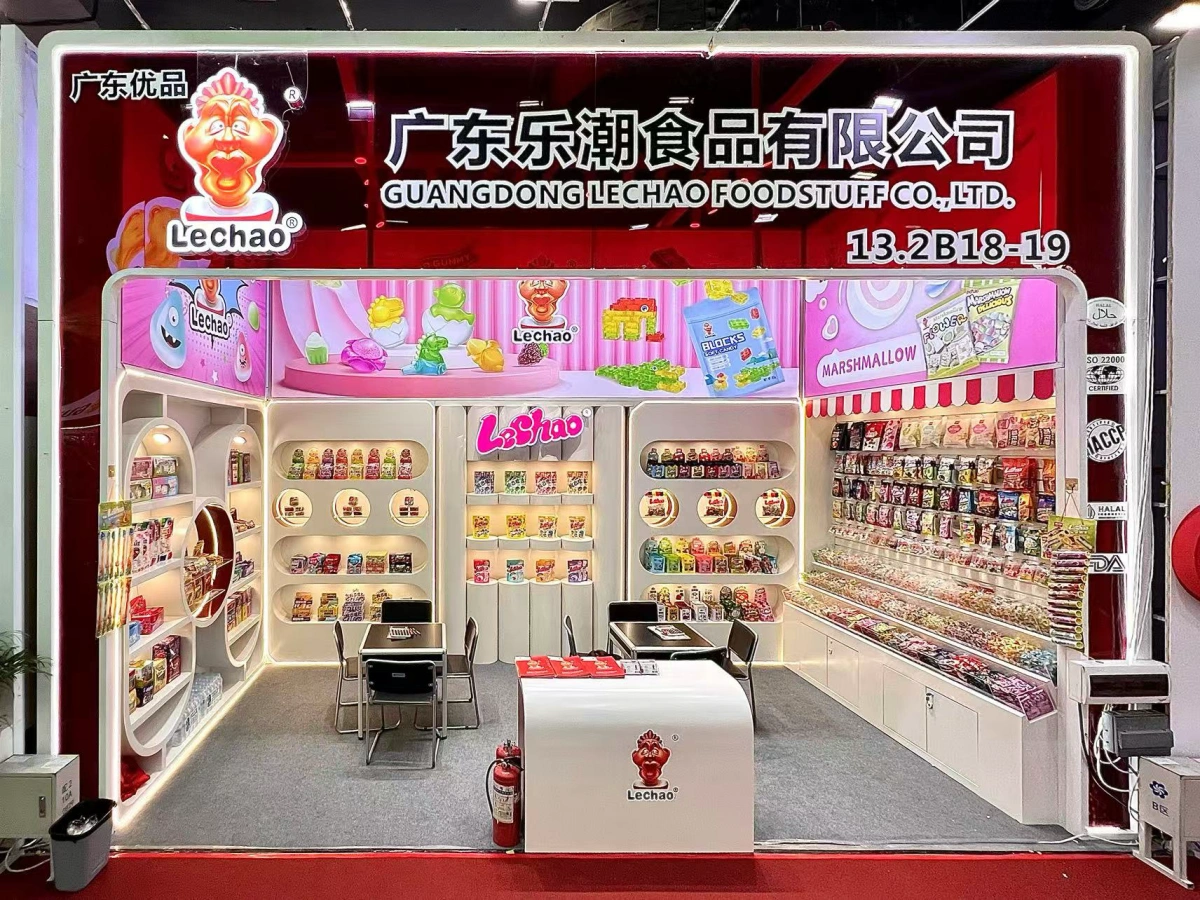
We maintain strict quality control systems and global logistics services to meet various needs of commercial customers. Welcome business clients to inquire and explore the unlimited possibilities of marshmallows in commercial applications!

